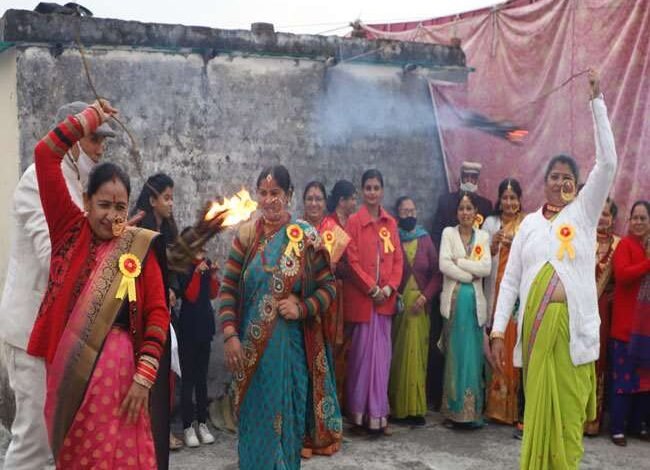How Egaas Festival is Celebrated in Lesser-Known Ways in Uttarakhand

Uttarakhand, the “Devbhoomi” or Land of the Gods, is a treasure trove of vibrant festivals that reflect its rich cultural heritage. Among these, the Egaas Festival stands out for its deep-rooted traditions and a unique connection to the local way of life. Celebrated 11 days after Diwali, this festival is lesser-known but holds immense cultural significance, especially in the hilly regions. Let’s explore how the people of Uttarakhand celebrate Egaas in ways that are both fascinating and unique.
1. Honoring Livestock with Love
In the villages of Uttarakhand, livestock is considered a part of the family. During Egaas, cows, goats, and other animals are adorned with colorful garlands and turmeric paste. Villagers light lamps in cattle sheds, symbolizing gratitude for their invaluable contributions to agricultural and daily life.
2. The Unique ‘Bagwal Dance’
One of the most striking features of Egaas is the Bagwal Dance. Men dress in traditional attire, often carrying wooden shields, and perform rhythmic moves to the beats of local instruments like dhol and damau. This dance is a reenactment of ancient battles, blending history and celebration in a captivating way.
3. Preparing Festive Delicacies
Festivals in Uttarakhand are incomplete without traditional food. On Egaas, families prepare special dishes like urad dal pakoras, bhang ki chutney, and sweets made from jhangora (barnyard millet). Sharing these dishes strengthens community bonds.
4. Observing ‘Badi Diwali’
For many Uttarakhandis, Egaas is also called Badi Diwali. It is believed that Lord Rama’s return to Ayodhya was celebrated late in the remote hills due to delayed communication in ancient times. Hence, the festival is a continuation of Diwali but with local flair. Villages light oil lamps in homes and temples, creating a serene, spiritual ambiance.
5. Singing Folk Songs and Narrating Local Legends
Egaas celebrations often include storytelling sessions where elders recount local folklore and legends. This oral tradition keeps the history and culture alive for younger generations. Folk songs like jagar and mandan are sung in groups, accompanied by traditional instruments.
6. A Sustainable Celebration
Unlike urban festivals marked by extravagance, Egaas emphasizes sustainability. Decorations are often crafted using natural materials like leaves, flowers, and earthen lamps, reflecting a deep respect for nature.
7. Community Bonding through Rituals
Egaas is not just a family affair but a community event. Villagers gather for rituals, collective prayers, and feasts. This fosters unity and strengthens ties in a way that modern urban festivals often miss.
Reviving Egaas in the Modern Era
While Egaas holds a special place in the hearts of Uttarakhandis, modern lifestyles and migration have caused a decline in its observance. However, efforts are being made to revive this cultural gem. Local organizations and communities are spreading awareness about the significance of Egaas, encouraging younger generations to embrace their heritage.
Conclusion
The Egaas Festival of Uttarakhand is a beautiful blend of tradition, gratitude, and community spirit. Its lesser-known rituals and practices offer a glimpse into the region’s rich cultural fabric. By celebrating festivals like Egaas, we not only honor our ancestors but also keep the essence of Uttarakhand’s unique heritage alive.